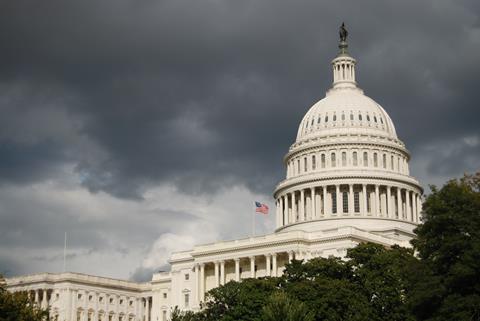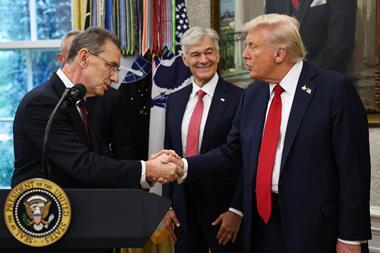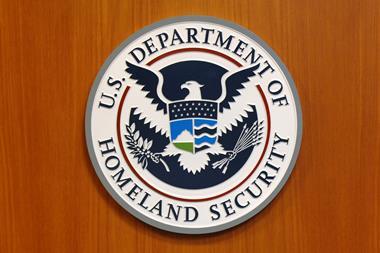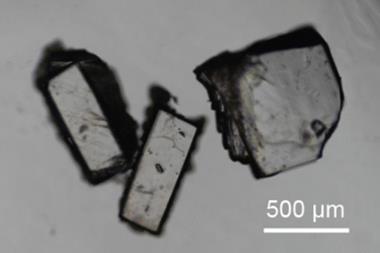A US government shutdown, triggered on 1 October when the Republican Party and Democrats in Congress failed to reach agreement on a spending bill for the new fiscal year, has thrown the country’s research enterprise into yet more chaos. Not only are prominent research policy figures and science organisations concerned by this development, so is the Republican chairman of the congressional committee that oversees a large part of the nation’s research.

There have been three US government shutdowns since 2013, including one that lasted 17 days under President Obama. But the longest one by far took place in late 2018 during Donald Trump’s first term as president, lasting more than a month and resulting in the loss of about $3 billion (£2.2 billion), or 0.02% of the country’s GDP, according to the Congressional Budget Office.
Neal Lane, a physicist who served as science adviser to former president Bill Clinton and previously as director of the US National Science Foundation, says during this closure grant proposals at his former agency and others are not being evaluated, and money is not going out to grantees at research universities either. In addition, he says consultations between researchers and agency programme officers are essentially impossible.
Research that has already been funded will presumably continue, provided that the university has already received the funding or is able to use its own funds, Lane explains. ‘The longer the shutdown lasts, the closer we will get to setting back American science for a year or more,’ he says.
Congressman Brian Babin, the Republican chairman of the House science, space and technology committee that has jurisdiction over federal non-defence and non-human-health research, cautioned that ‘a government shutdown threatens to grind America’s science and technology enterprise to a halt’. He suggested, for example, that ‘critical Nasa missions with national security implications could be delayed, and cutting-edge research could be stalled’.
Amplifying uncertainty
The chief executive of the American Association for the Advancement of Science (AAAS), Sudip Parikh, advised that shutting down the government is ‘no way to unleash US innovation’. He said the government’s closure, however long it lasts, ‘delays setting clear priorities for our nation’s research enterprise and amplifies uncertainty that has enveloped the scientific community’.
Joanne Padrón Carney, the AAAS’s chief government relations officer, emphasises that funded research awards will continue, but says that the research enterprise will falter. Access to facilities and federal lands for field studies will be hindered, and there is concern, based on President Trump’s remarks leading up to the shutdown, that the administration could make structural changes to federal agencies during the shutdown that could affect research programmes, she adds.
Officials from academic and research advocacy groups like the Association of American Universities, the Association of Public and Land-grant Universities, the American Council on Education and the Science Coalition released statements warning that the shutdown disrupts research funding at universities, and urged Congress and Trump to find a path to fund the federal government. The American Chemical Society and the American Society for Biochemistry and Molecular Biology declined to comment on the shutdown.
Even before this shutdown, federal funding of research in the US had suffered badly under the Trump administration, according to John Holdren, an environmental and climate scientist who was science adviser to former president Barack Obama. In particular, he points to ‘all aspects of climate science’, including relatively inexpensive but crucial monitoring of greenhouse-gas concentrations, renewable energy, as well as biomedicine and public health.
Holdren, an environmental and climate scientist, also highlights the revocation of research grants by the Trump administration. ‘There have been slowdowns in grantmaking overall, and the impacts on research in the short and long terms will also include the decline in the capable research workforce that results from potential skilled recruits from abroad refusing to come (or being denied) and skilled workers in training or already in the workforce leaving the research field both involuntarily and voluntarily,’ he adds.
Lowered expectations
Holdren suggests that the shutdown will see the grant processes that remain ‘come to a complete halt’, and some grants that have been approved but haven’t yet received funding will probably face further delays. But the magnitude of such impacts will depend on how long government agencies remain closed, and on the extent to which the administration’s threat to fire federal workers, instead of merely furloughing them, is implemented.
‘I throw up my hands,’ Holdren declares. ‘I can only say that, even without a shutdown, the Trump administration’s stance on federal research has been a disaster for science and, as a consequence, ultimately, for the US economy, environment, public health and international standing. A prolonged shutdown could only make it all even worse.’
Jeremy Berg, a biochemist who served as director of the US National Institutes of Health’s National Institute of General Medical Sciences for almost eight years, agrees. ‘It is unclear how long the shutdown will last, and it is unclear exactly how the various agencies will handle the situation,’ he states. ‘In the past, I always had confidence that the agencies would try to minimise the disruption related to a government shutdown. That is no longer the case.’

















No comments yet